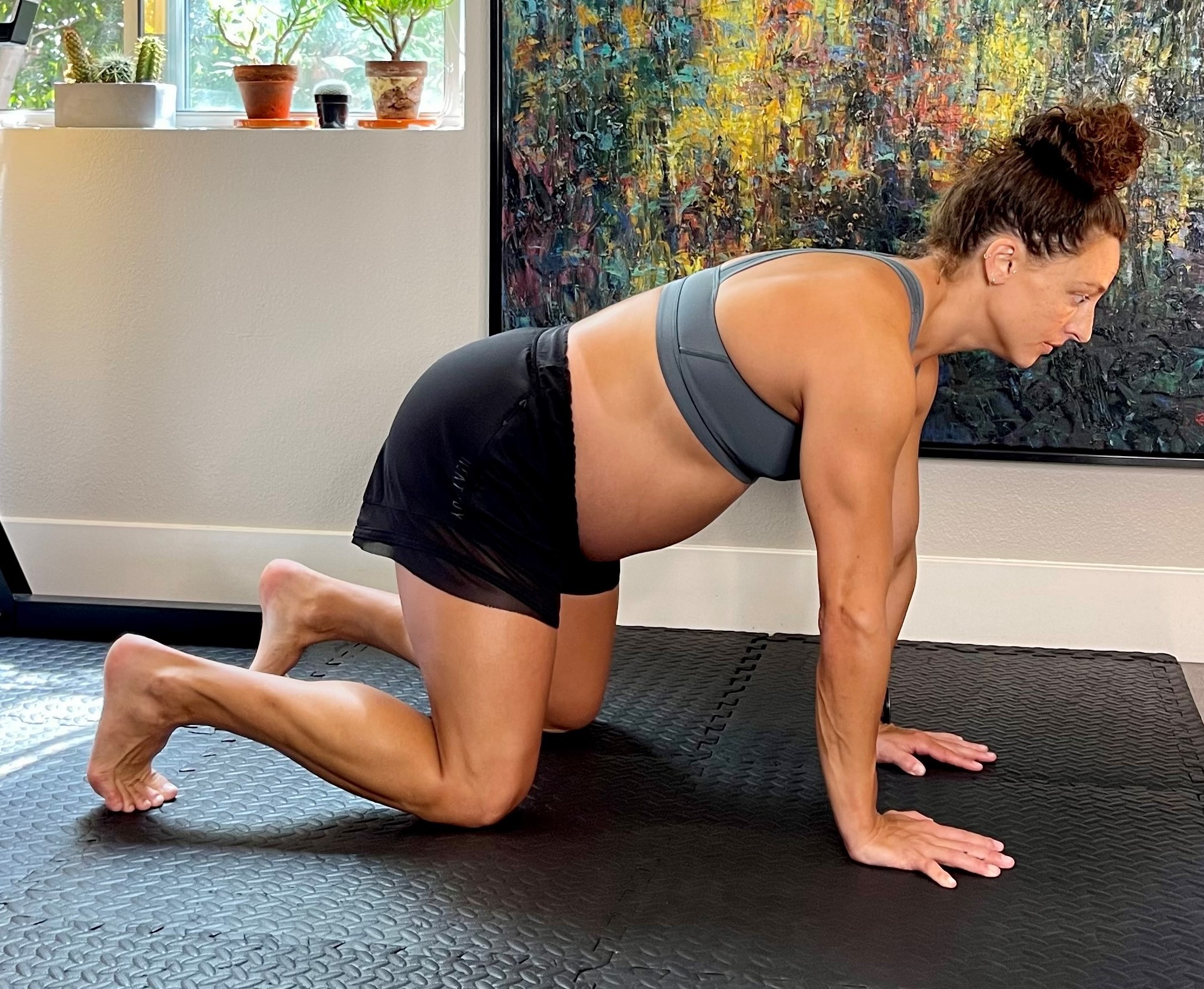There are are numerous beneficial exercises that can help you prepare for various aspects of birth — including breathing, energy system training, pushing practice, and overall strength training. This article will focus on specific mobility exercises that can help facilitate an easier labor (for you and your baby).
First, we will look at what positions during labor can help facilitate baby’s movement through the birth canal. Then, we will share specific mobility exercises that you can practice now to ensure you can comfortably access those positions during labor.
The Key to Baby’s Movement = SPACE in the Pelvis
The trip through the birth canal is not a straight path. You can see this in the image below. Notice how the baby’s head does not align with the vaginal opening. Therefore, in order to exit, human baby’s must perform a series of complex movements (known as the cardinal movements).
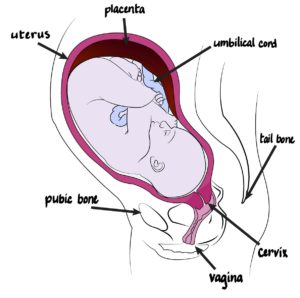
Amazingly, babies are essentially pre-programmed to perform these movements, but they need SPACE to do so. If we can maximize the amount of space a baby has within the pelvis, we can not only speed this process along, but also minimize the stress on muscles and tissues within the pelvic bowl (and therefore minimize the risk injury).
So, how do we create space in the pelvis?
How to Create the Greatest Space in Your Pelvis
First, it’s important to understand how baby moves through the pelvis. In the early stages of labor, baby begins at the top of the pelvis, called the inlet. As labor progresses, baby moves through the mid-pelvis and then exits at the bottom of the pelvis, called the outlet.
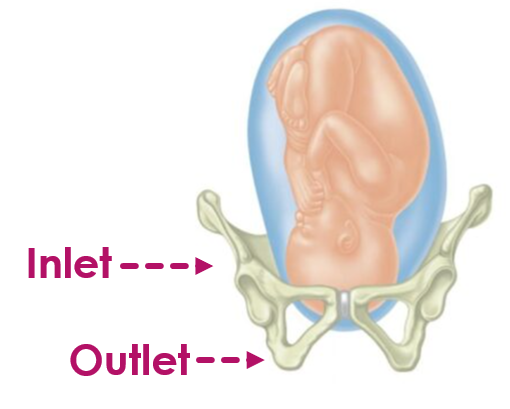
You can help create this space with two key pelvic movements: Tucking and Untucking
“Tucking” Helps Widen the Pelvic INLET
Think of the “cat” portion of cat-cow below. Tucking the pelvis under — along with externally rotating your hips so that your knees are wider than your feet — creates greater space at the top of the pelvis (inlet).
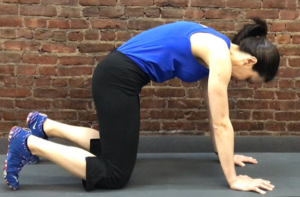
“Untucking” Helps Widen the Pelvic OUTLET
Now, think of the “cow” portion of cat-cow below. Untucking the pelvis — along with internally rotating your hips so that your knees are closer than your feet — creates greater space at the bottom of the pelvis (outlet).
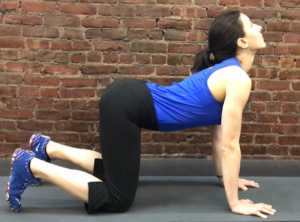
Mobility Exercises to Prepare the Pelvis for Birth
Now that you understand that tucking and untucking (and internal and external rotation at your hips) at various stages of birth is key to creating space, the mobility exercises below can help you practice these different positions. You do NOT need to worry about when to perform tucking or untucking during your labor. Your midwife, doula, nurse, or other professional can help with this guidance. The important thing for you to focus on is ensuring you can access these positions when needed by doing the preparatory mobility practice. That is how the exercises below can help.
NOTE: For all exercises below, it is very important to breathe comfortably in all positions. This lets your brain know the position is safe to be in, which allows your tissues to fully relax so that you get the most out of your mobility work.
- Windshield Wipers: This primes your thighs to be able to move wide and narrow, or internal and external rotation (knees wider than feet, and then knees closer than feet).
- Frog with Foot Lift-Off: This move takes the Windshield Wipers to the next level by activating the hip rotators at their end ranges.
- Cat Pose with Knees Wider than Feet: This is the pelvic inlet opener we talked about above — tucking the pelvis with help from the widening of the thighs (knees wider than feet).
- Deep Squat with Wide Knees: This is another pelvic inlet opener. It may be more challenging to keep your feet narrower in this position, so work with the range you have available.
- Happy Baby Pose: This is another pelvic inlet opener because it involves tucking the pelvis. You can play around with the knee width relative to the feet. Plus, it just feels good and is a preview of what you will be seeing your baby do in a few months😊.
- Cow Pose with Knees Closer than Feet: This is the pelvic outlet opener we talked about above — untucking the pelvis with help from the narrowing of the thighs (knees closer than feet).
- Supported Hinge with Knees Closer than Feet: This is another great “untucking” movement that helps open the pelvic outlet.
Want Additional Resources?
For additional resources to help you exercise safely and effectively during pregnancy, explore our training programs and services. You’ll find a variety of offerings tailored to different needs — from education, to self-guided programs, to the ability to work with an expert coach.
Or, if you’re a health & fitness pro interested in coaching pre & postnatal clients, check out our ProNatal Education & Certification.
